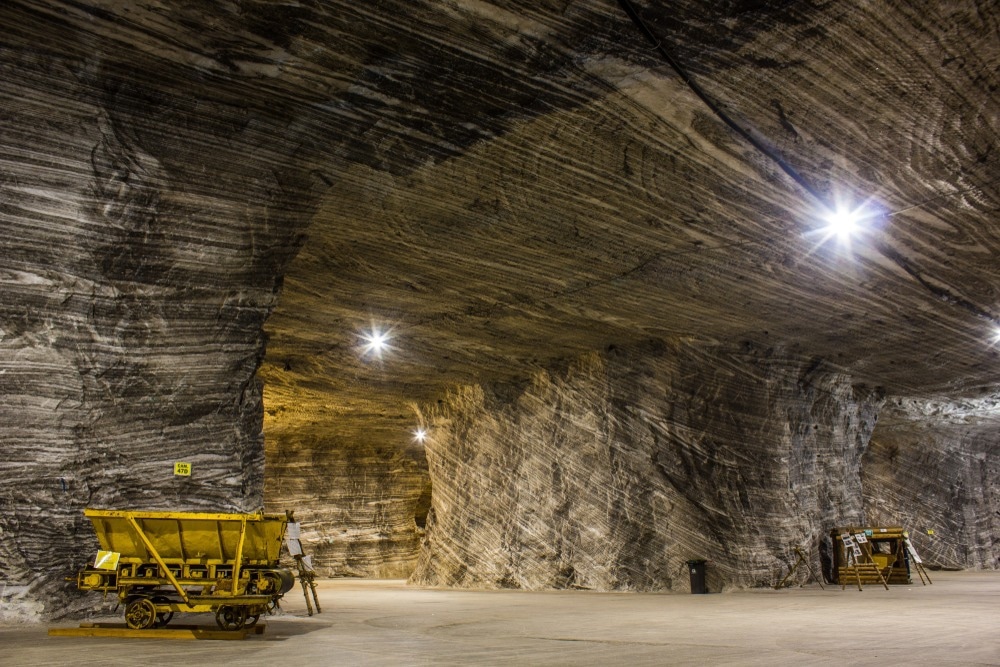Rapid technological advances over the past few decades have made mining safer, more efficient, and improved operations’ cost efficiency. This article will look at developments and prospects in 3D laser scanning technologies in underground mining.

Image Credit: Maria Passer/Shutterstock.com
Improving Mining Through Innovative Technologies
Mining is a crucial economic activity, but its history has seen critical challenges regarding worker safety and mine efficiency.
As ever deeper resources are extracted from within the Earth, avoiding critical emergencies such as cave-ins that impact miner safety and financial output becomes more crucial.
Working within a mine also causes long-term health problems in workers, such as black lung disease caused by coal dust. Mining-related diseases can be incredibly debilitating to individuals affected and, in worst-case scenarios, can be fatal.
Technology has improved mine safety and operational output since the industry’s origins. From rudimentary support systems to modern technologies, such as automated plant equipment, advanced sensors, and remote-control systems, technological innovation plays a vital role in the evolution of mining.
Mines today are far from those of the past few decades. For most of mining history, extracting resources from deep underground required massive workers operating in dangerous, cramped conditions.
Today, mines require far fewer workers, with many companies investing in technologies that allow miners to control machinery far from the longwall.
Sensors and predictive analytics allow miners to monitor operations remotely in real time and predict critical equipment and infrastructure failures before they occur.
3D Laser Scanning: An Innovative Technology Changing the Mining Industry
Removing workers from deep underground mines continues to be a primary focus of many researchers and companies working in the mining ecosystem. This not only improves the safety of miners but also makes mines more efficient and cost-effective as fewer workers are required to extract resources.
3D laser scanning is a field of research that has received growing attention in mining in recent decades.
Laser scanning is a highly efficient survey method that allows fast scanning of structures, installations, landscapes, and furnishings. Complex structures can be safely mapped in unprecedented levels of detail.
In regard to mining, cavities, contours, and profiles of tunnels can be mapped using a 3D laser scanner. Moreover, dangerous, inaccessible areas such as those prone to collapse and landslides can be safely surveyed in three dimensions without posing a risk to life, improving the efficiency of monitoring and planning.
Various technologies can be used to perform 3D scanning, with fixed and mobile systems such as drones widely employed in surveying operations. Mines can be monitored 24 hours a day, with scanning technologies such as LiDAR used onboard systems.
CSIRO’s ExScan
Since 2017, CSIRO has developed ExScan, a 3D laser scanning technology that allows operators to perform complex tasks far from the physical coal face. Workers receive the same information that they would if they were standing next to machinery in a deep underground mine.
CSIRO received funding from the Australian Coal Industry’s Research Program to develop the technology, which is now being employed in at least ten mines in Australia. Mines in several overseas locations, such as the US, use CSIRO's innovative 3D laser scanning technology.
CSIRO's primary aim is to improve worker safety. In Queensland alone, there were 356 serious incidents in the five years to June 2022 in underground and surface mines, with 10 fatalities. CSIRO has stated that this technology could also be used in industries such as civil engineering.
Even the smallest equipment can cause a spark risk, leading to explosions. Excessive gases such as methane can also enter electronics, presenting additional risks.
With this in mind, ExScan is explosion-proof, with a powerful sensing platform in an enclosure and meeting international standards for use in volatile underground environments.
Real-time 3D maps of underground walls, cavities, and tunnels are generated by the laser scanner and ExScan’s proprietary software, which can be used to navigate vehicles and equipment. The scanner can penetrate deep underground areas that a GPS cannot.
ExScan can be mounted in multiple orientations on equipment, moving vehicles, and machinery, providing whole-mine mapping capabilities. The system can be integrated with current LASC information systems or used as a standalone solution. Furthermore, the system is relatively inexpensive to produce.
The Future of 3D Laser Scanning in Deep Underground Mining
As the mining industry undergoes a rapid transition to automated, remote operational capabilities, there is a need for innovative technological solutions to meet demands. The transition to a post-carbon economy also requires significant investment in advanced technologies.
3D laser scanning is a solution for mine planners that takes workers out of potentially dangerous environments underground and helps mine planners improve efficiency and the cost-effectiveness of resource extraction.
Technologies such as CSIRO’s ExScan are helping to revolutionize the 21st-century mine, providing capabilities that would not have been possible 20 years ago. Several other companies are working within this research and development space, helping to overcome many of the current challenges in mining.
Read More: 3D Laser Mapping in the Mining Industry
References and Further Reading
Beavan, K (2022) Underground coal mining safety improves with 3D laser-scanning technology [online] abc.net.au. Available at: https://www.abc.net.au/news/2022-12-19/automated-mining-way-of-the-future-as-technology-improves-safety/101765218
CSIRO (website) ExScan 3D underground mapping [online] Available at: https://www.csiro.au/en/work-with-us/industries/mining-resources/Sensing/ExScan
Disclaimer: The views expressed here are those of the author expressed in their private capacity and do not necessarily represent the views of AZoM.com Limited T/A AZoNetwork the owner and operator of this website. This disclaimer forms part of the Terms and conditions of use of this website.